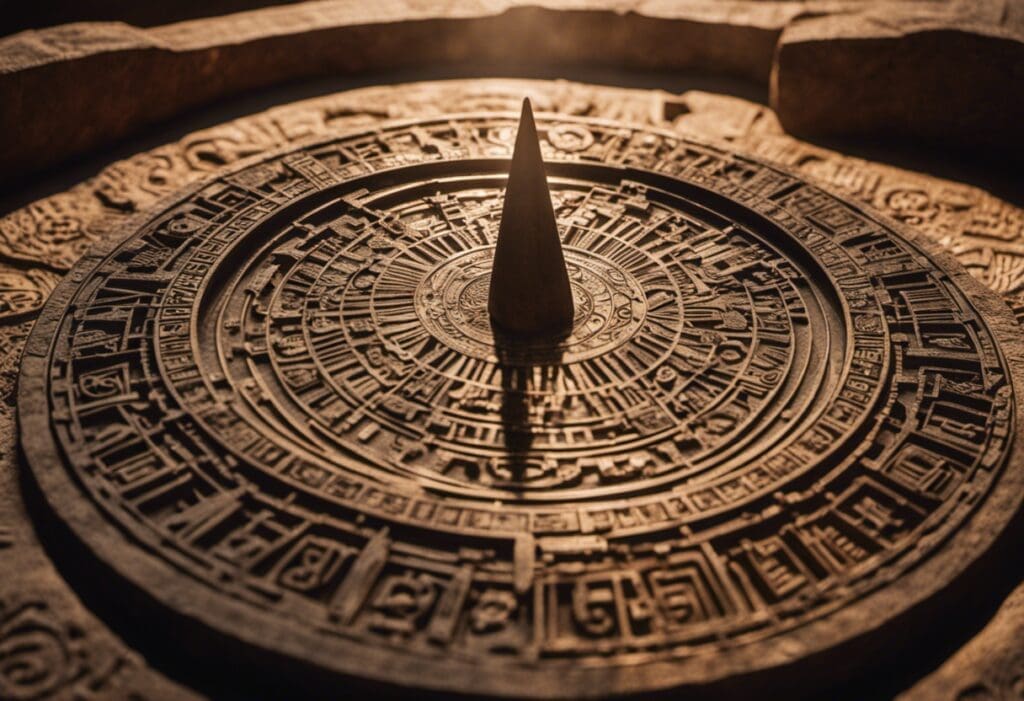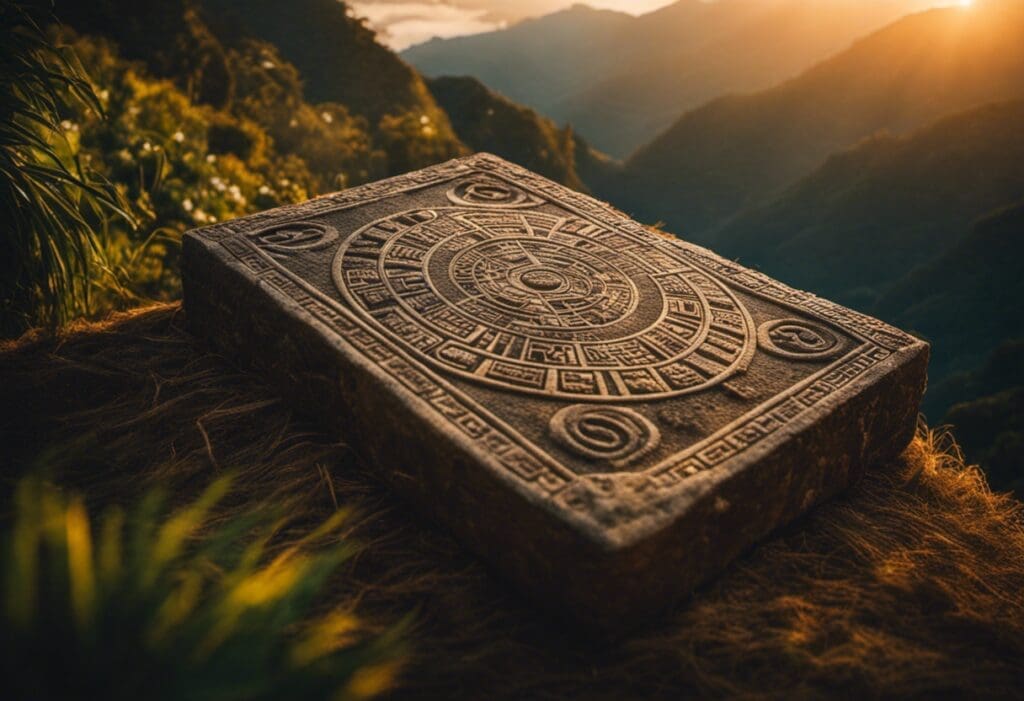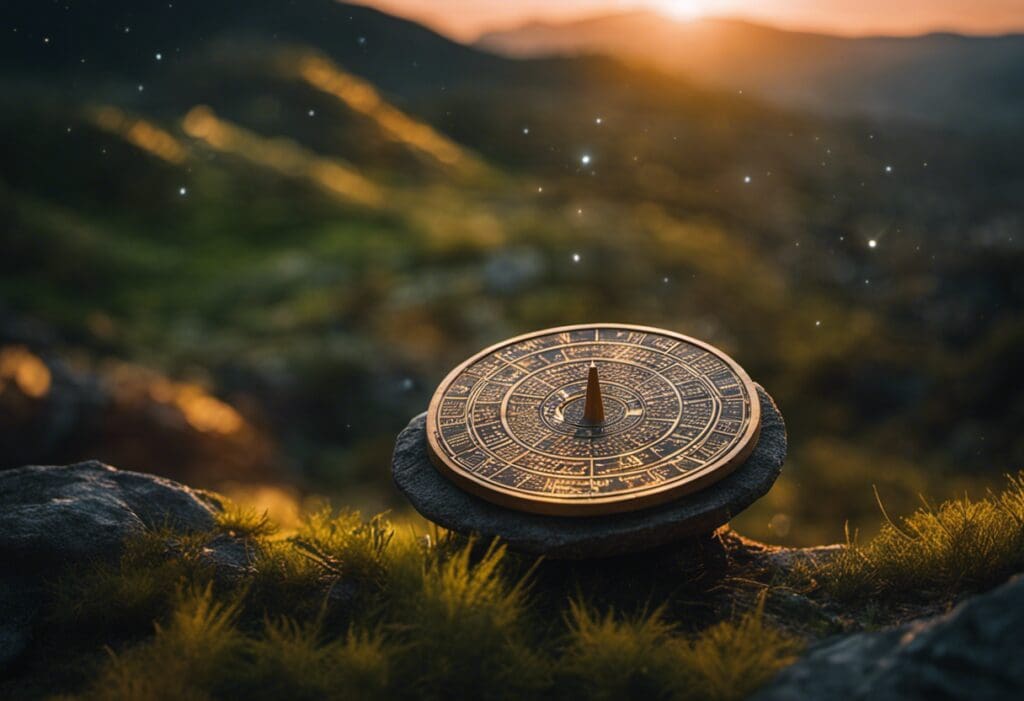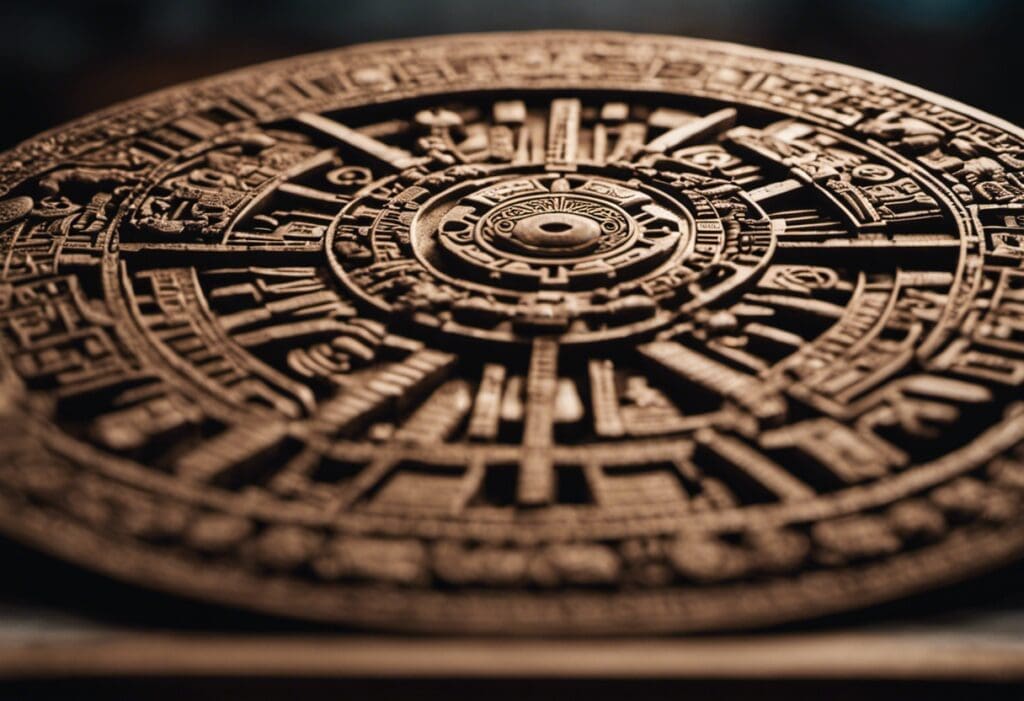Time is a tapestry woven with symbols, and the Inca calendar is a key to unlocking its secrets.
In this article, we embark on a journey to decode the intricate language of the Inca calendar, exploring its origins, structure, and significance.
Through objective analysis and evidence-based research, we delve into the techniques and challenges of deciphering this ancient calendar.
By understanding its rituals and ceremonies, we unravel the legacy of the Inca calendar and its modern-day applications and interpretations.
Key Takeaways
- The Inca calendar, known as the ‘quipu,’ was developed to track the seasons for agricultural purposes.
- The calendar consisted of a solar calendar (Inti Raymi) and a lunar calendar (Quilla Raymi).
- Symbols played a significant role in the organization and understanding of Inca society, and were used in religious rituals, record-keeping, and artistic expressions.
- Deciphering the Inca calendar is challenging due to limited written records, but scholars rely on archaeological evidence, oral traditions, comparative studies, and astronomical observations to gain insight into its cultural interpretation and celestial significance.
The Origins of the Inca Calendar


One of the most fascinating aspects of the Inca civilization is the origins of their intricate calendar system. The Inca calendar, known as the ‘quipu,’ was a sophisticated method of recording time and organizing their societal activities. The origins of this system can be traced back to the early development of the Inca civilization.
The Inca calendar had its roots in the agricultural practices of the ancient Andean peoples. The ability to accurately track the seasons was crucial for their survival and success in farming. Over time, this need for precision in timekeeping led to the development of a more complex calendar system.
The origins of the Inca calendar can also be linked to their religious beliefs. The Inca people revered the sun, moon, and stars, and believed that these celestial bodies influenced their daily lives. By developing a calendar system, they could align their activities with the movements of these celestial bodies and ensure harmony in their society.
The Inca calendar system underwent continuous development and refinement throughout the history of the civilization. As the Inca Empire expanded and encountered different cultures and traditions, they incorporated new elements into their calendar system, making it even more intricate and sophisticated.
The Structure and Components of the Inca Calendar


The Inca calendar was comprised of several intricate components that worked together to form a complex and precise system for tracking time and organizing the societal activities of the Inca civilization. This calendar system was based on astronomical calculations and alignments, reflecting the Inca’s deep understanding and reverence for celestial bodies.
The structure of the Inca calendar consisted of two main components: the solar calendar and the lunar calendar. The solar calendar was known as Inti Raymi, which tracked the movements of the sun. It was divided into twelve months, with each month having thirty days. The lunar calendar, known as Quilla Raymi, followed the phases of the moon and was used to determine the time for religious ceremonies and agricultural practices.
The Inca calendar also incorporated a sophisticated system of intercalation, which involved adding extra days or months to ensure alignment with astronomical events. This allowed the Inca to accurately predict celestial events such as solstices and equinoxes, which were of great importance in their agricultural and religious practices.
Furthermore, the Inca calendar featured various symbols and representations that conveyed important cultural and religious meanings. For example, the Inca used a system of knots called quipu to record and keep track of important events and information.
The Significance of Inca Calendar Symbols


Frequently utilized as a means of conveying important cultural and religious meanings, the symbols found within the Inca calendar system played a significant role in the organization and understanding of the Inca society. The symbolism of Inca calendar symbols extended beyond their mere representation of time and cycles. These symbols were deeply ingrained in the daily life of the Inca people and held great significance in various aspects of their society.
One of the key roles of Inca calendar symbols was in the religious rituals and ceremonies of the Inca civilization. The symbols were believed to connect the earthly realm with the spiritual world and were used to invoke and honor the Inca gods. These symbols were often incorporated into offerings and sacrifices, and their presence was believed to enhance the efficacy of these rituals.
Additionally, the symbols found in the Inca calendar system also played a crucial role in the governance and administration of the empire. They were used as a means of record-keeping, allowing the Inca rulers and administrators to document important events, such as astronomical observations, agricultural cycles, and significant historical events.
Inca calendar symbols were also used in artistic expressions, such as textiles, pottery, and architectural designs. These symbols were seen as a way to communicate the Inca’s worldview, their beliefs, and their connection to nature and the cosmos.
Deciphering the Inca Calendar: Techniques and Challenges


Deciphering the Inca calendar involves various techniques and challenges.
One important aspect is understanding the cultural significance and interpretation of the symbols used in the calendar.
Additionally, astronomical alignment and calculations play a crucial role in decoding the calendar’s complex system of timekeeping.
Cultural Significance and Interpretation
- The calendar was central to their daily lives and played a crucial role in ceremonies, rituals, and governance.
- Deciphering its cultural interpretation is challenging due to limited written records.
- Scholars rely on archaeological evidence, oral traditions, and comparative studies with other Mesoamerican calendars.
- A multidisciplinary approach is necessary to fully understand its cultural significance.
Astronomical Alignment and Calculations
By examining the astronomical alignment and employing intricate calculations, researchers can begin to unravel the complexities of the Inca calendar and gain insight into its celestial connection and astronomical significance.
The Inca civilization heavily relied on astronomical observations to develop their calendar system. They studied celestial alignments to determine the movements of celestial bodies and their significance in relation to their daily lives. The Inca calendar incorporated various celestial events such as solstices, equinoxes, and the movement of stars and planets. These observations were then used to calculate the passing of time and to determine important agricultural and religious events.
However, deciphering the Inca calendar poses significant challenges due to the lack of written records and the complexity of their mathematical calculations. Researchers are continuously working to unravel the mysteries of the Inca calendar and unlock its astronomical secrets.
Preservation and Future Research
The preservation of ancient artifacts and the future research efforts dedicated to unraveling the secrets of the Inca calendar present a multitude of challenges for scholars in the field. The delicate nature of the artifacts and the passage of time make future preservation a critical concern. Without proper care and conservation, these invaluable pieces of history could be lost forever.
Additionally, deciphering the intricacies of the Inca calendar poses significant research challenges. The lack of written records and the complexity of the calendar system require scholars to rely on a combination of archaeological evidence, astronomical observations, and mathematical calculations. Furthermore, the limited understanding of the Inca civilization and their religious beliefs adds another layer of complexity to the research.
Despite these challenges, researchers remain dedicated to preserving and decoding the Inca calendar, as it holds valuable insights into the ancient civilization’s understanding of time and their connection to the cosmos.
Rituals and Ceremonies Tied to the Inca Calendar


Inca rituals and ceremonies revolved around the intricate and precise workings of their calendar system. The Inca calendar held great significance for the Inca civilization, as it was believed to govern the cyclical patterns of time and connect the spiritual and earthly realms. The calendar was used to determine auspicious dates for various ritual practices, which played a crucial role in Inca religious and social life.
One of the key ritual practices tied to the Inca calendar was Inti Raymi, the Festival of the Sun. This grand ceremony took place every year during the winter solstice and marked the beginning of the agricultural year. It involved elaborate processions, music, dance, and animal sacrifices to honor Inti, the sun god. The festival symbolized the renewal of life and the cyclical nature of time, reinforcing the Inca’s connection to the divine.
Another important ritual was Capacocha, a ceremony conducted to honor the gods and ensure the well-being of the empire. It involved the sacrifice of children and valuable items, such as gold and silver. The victims were carefully selected based on their physical perfection and noble lineage, and their sacrifice was seen as a way to maintain balance and harmony in the cosmos.
The Legacy of the Inca Calendar: Modern-Day Applications and Interpretations


The Inca calendar continues to hold cultural significance today, as it serves as a symbol of the rich history and traditions of the Inca civilization.
Modern-day applications of the calendar include its use in cultural events and festivals, where it helps to preserve and celebrate Inca heritage.
Furthermore, the Inca calendar’s astronomical connections provide valuable insights into the ancient civilization’s understanding of celestial bodies and their relationship with time.
Cultural Significance Today
With the passing of time, the cultural significance of the Inca Calendar continues to be explored and appreciated in various fields.
One area where its importance is evident is in cultural preservation. The Inca Calendar serves as a symbol of the rich history and traditions of the Inca civilization, and its study and interpretation contribute to the preservation of this cultural heritage.
Additionally, the calendar holds great significance in indigenous spirituality. It is seen as a sacred tool that connects the spiritual and physical realms, guiding individuals in their spiritual journeys and providing insight into the natural cycles of life.
The calendar’s continued exploration and interpretation in these areas not only deepen our understanding of the Inca civilization but also contribute to the ongoing appreciation and recognition of indigenous cultures and their spiritual beliefs.
Astronomical Connections and Insights
Through the study of astronomical connections and insights, the legacy of the Inca Calendar continues to provide modern-day applications and interpretations.
The Inca civilization had a deep understanding of celestial bodies and their movements, which they incorporated into their calendar system. Astronomical symbolism played a significant role in the Inca calendar, allowing them to track the movements of the sun, moon, and stars. This knowledge enabled them to determine agricultural cycles, predict weather patterns, and plan religious ceremonies.
Today, researchers and scholars continue to explore the astronomical connections of the Inca Calendar, uncovering new insights into ancient traditions. By understanding the celestial alignments and symbolism within the calendar, we gain a better understanding of the Inca civilization and can apply this knowledge to fields such as archaeoastronomy and cultural anthropology.
Conclusion
In conclusion, the Inca calendar remains a fascinating and enigmatic symbol of the ancient civilization’s intricate understanding of time. Its origins, structure, and symbols reveal a sophisticated system that guided the Inca people in their rituals and ceremonies.
Deciphering the calendar poses challenges, yet ongoing research and analysis continue to shed light on its complexities.
Today, the legacy of the Inca calendar lives on, offering modern-day applications and interpretations that deepen our appreciation for this remarkable ancient civilization.




